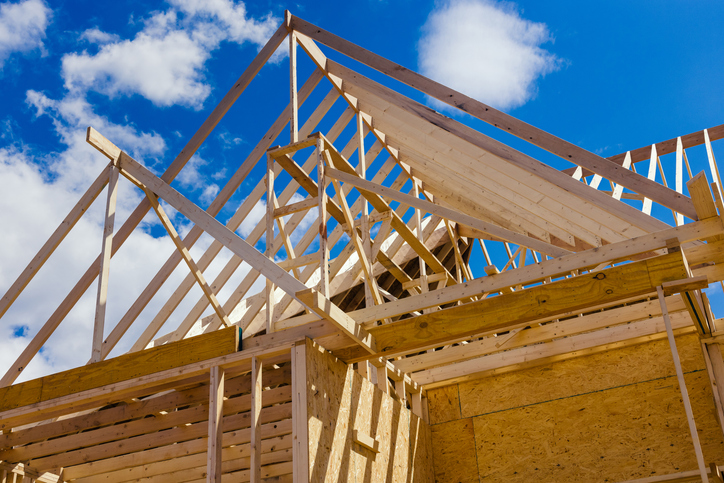
Even as the country is experiencing a housing shortage, construction of new single-family homes has slowed according to a report released last month by the Harvard Joint Center for Housing Studies (JCHS). The State of the Nation’s Housing report has been published for more than 30 years.
“This was a surprising finding, with the ongoing shortage of housing across the country, it hasn’t resulted in a dramatic increase in housing supply,” said Daniel McCue, senior research associate at JCHS.
“We continue to see tight markets with limited supply in many markets and homeownership vacancy rates are as low as the 1950s,” according to Daniel McCue, senior research associate at Harvard Joint Center for Housing.
Rising interest rates, inflation and increased costs have attributed to the slow growth of new homes. “We looked at the impact of inflation, which has really hit builders. The cost of materials was up 35% since early 2020, compared to the previous three years when costs were up 9%. And this doesn’t include labor costs or costs to prepare the site for building,” McCue said. “This makes it very difficult for builders to build profitably at lower price points.”
New Homes Getting Larger
“We looked at the size of homes and found they’re getting bigger. A 1,800-square-foot home is a fifth of the market now. It used to be a third of the market in the ‘90s. This makes fewer options for the entry level homebuyers,” he said. “With the shortage of existing homes on the market, there aren’t as many options for people looking for a modest-sized home.”
McCue noted, “Housing costs remain well above pre-pandemic levels thanks to the substantial increases over the last few years.” The report notes that since the beginning of 2020, asking rents in the professionally managed sector are up by 24% while home prices are up by 37.5%.
Housing Affordability Has Dropped
Between 2019 and 2021, the country saw the most significant drop in housing affordability in years. The number of cost-burdened homeowners—defined as those spending more than 30 percent of their income on housing—increased more than any time since the housing boom of 2005-2007, and the number of cost-burdened renters hit a record high of 21.6 million households. Of these, 11.6 million renters were severely cost burdened, spending over half of their income on housing. Making matters even worse, the supply of low-cost rental units continues to decline: the market has lost 3.9 million units with contract rents below $600 in the last decade. This leaves the most vulnerable with few options and has fueled a 35% nationwide increase in unsheltered homelessness since 2015.
McCue noted that the impact of affordability has had a huge impact on homeownership. “For example, in Philadelphia, prices are up and monthly mortgage and taxes were up by 31%, which has a pretty big impact on affordability. It’s a much higher bar to buy a home in Philadelphia,” he noted.
The report shows that between March 2022 and March 2023, payments on the median-priced home in the U.S. shot up from $2,500 to $3,000 as the annual interest rate on 30-year fixed-rate mortgages jumped from 4.2% to 6.5%. This resulted in a 22% annual decline in the number of mortgages originated to first-time homebuyers in 2022, including a year-over-year drop in the fourth quarter of nearly 40%, as more than 2.4 million potential homebuyers were priced out of homeownership.
Previous Low Mortgage Rates
McCue noted that many homeowners are enjoying mortgage rates well below today’s market value, with two-thirds of mortgages currently at an interest rate below 4%. “Many of these homeowners will hold onto their homes to keep their low rates unless a move is urgent,” he added.
Areas that have a number of second homes have a limited supply of affordable housing for service employees, McCue said.
Zoning Restrictions Hinder New Construction
“Some previously second homes or part-time rentals have become full-time residences,” he said. “Many of these areas don’t have the services needed when people are living there full time.”
Barriers to increasing the housing supply include zoning restrictions, which many communities have to maintain a small-town feel.
“These types of zoning restrictions make it difficult to increase density to ease the pressure of lack of affordable housing. We found in our study that it’s becoming more of a crisis even for middle income households where the burdens are rising faster,” McCue said. “I think we’re going to be looking at the federal government trying to give more incentives for local governments to ease up their restrictions on housing and grants may be tied to zoning restriction changes. And more states are putting more limits on the amount that local jurisdictions can restrict housing.”
McCue noted that mobility patterns have also had an effect on housing needs. “The ability to work remotely allows people to move further into the suburbs, which increases the demand for housing in these areas,” he said.
Topics
Member Discussion
Recent Articles
-
7 Flowers for Curb Appeal in Pennsylvania
- May 6, 2025
- 3 min. read
Planting native perennials can be a great, low-maintenance way to boost curb appeal. Here are seven that thrive well in Pennsylvania.
-
Study Shows Pa. Has High New Construction Premiums
- May 5, 2025
- 3 min. read
The Affordability and Homebuilding: State-by-State Report Cards showed that states in the Northeast and West, which generally have stricter zoning and land use regulations, received some of the lowest grades in affordability and homebuilding.
-
New Cumberland Valley Neighborhood Preserves Nature, Plans for 1,000 Homes
- May 2, 2025
- 2 min. read
Grange was transformed from a century-old dairy farm into a modern neighborhood that meets the needs for multigenerational living and various other lifestyles.
Daily Emails
You’ll be the first to know about real estate trends and various legal happenings. Stay up-to-date by subscribing to JustListed.



